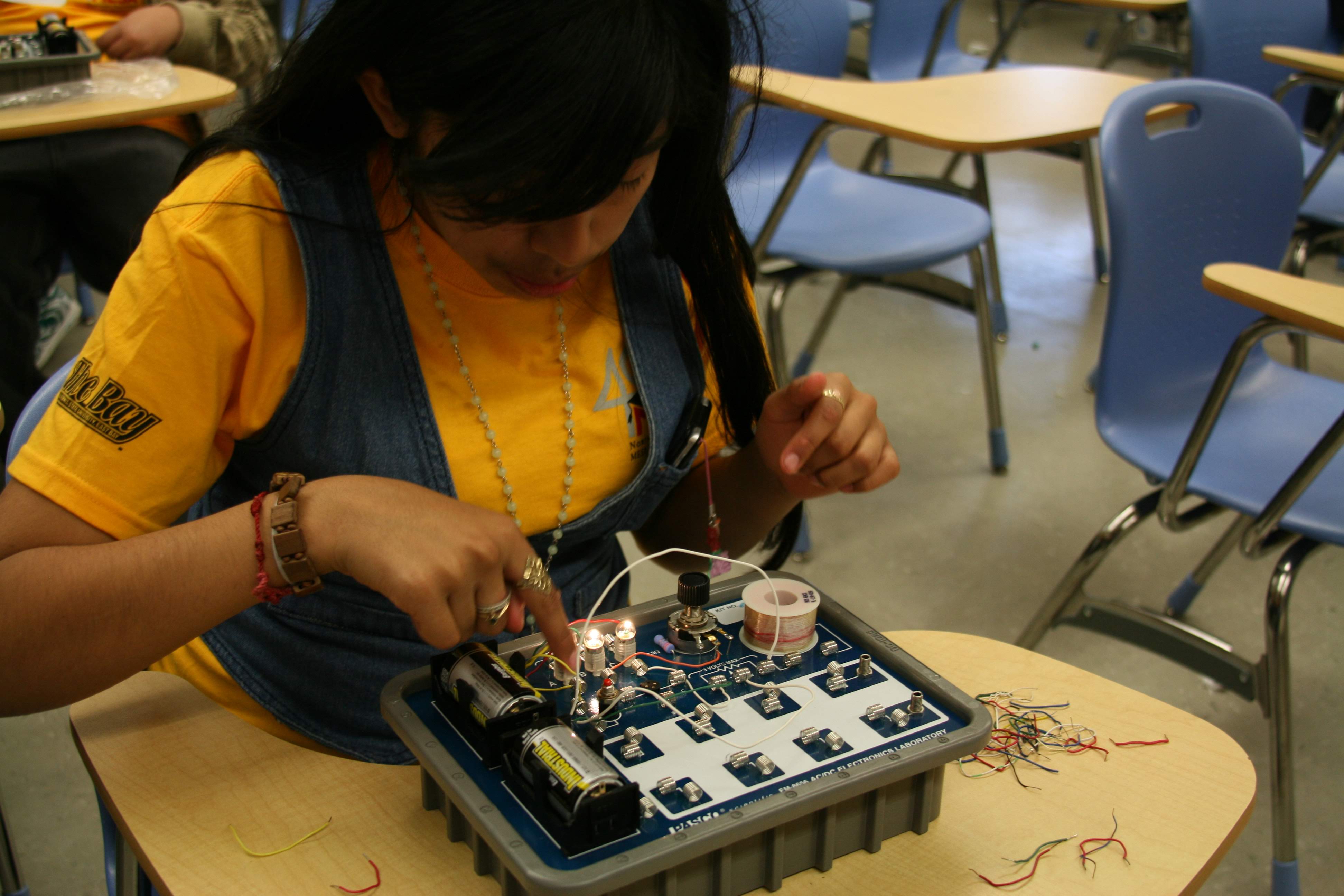History of MESA
Scroll to find out more about MESA's 50 years of STEM successTimeline
Milestones in MESA History

Late ’60s
A group of concerned Berkeley educators launched a study to determine why so few African Americans, Latinos, and American Indians are enrolled in the UC Berkeley College of Engineering. They developed a solution based on pre-college intervention.

1970
The MESA program is founded at Oakland Technical High School with 25 students. MESA’s goal is to develop academic and leadership skills, raise educational expectations, and instill confidence in California’s students historically underrepresented in engineering, physical science, or other math-based fields, in order to increase the number of African American, Latino American and American Indian graduates from a four-year university.

1973
Concerned about issues of retention, CSU-Northridge engineering faculty member Ray Landis establishes the Minority Engineering Program.

1977
Impressed with MESA’s success, the Hewlett and Sloane foundations provide $1 million to expand the Berkeley model and develop pre-college programs throughout the state.

1978
With major support from Roger Heyns, president of the Hewlett Foundation, and Stephen Bechtel, Jr., president of Bechtel Corporation, the Industry Advisor Board (IAB) is established to mobilize corporate support for MESA. Richard Collins, a Bechtel vice president, is the first IAB chair. Other participants include the president of ARCO and the chairpersons of Chevron, Fluor Corporation, Hewlett-Packard, Lockheed, Northrop, PG&E, Pacific Telephone, Rockwell, Southern California Edison and TRW.

1979
The state legislature allocates $250,000 to MESA, conditional upon dollar-for-dollar matching donations from industry. The match is accomplished

1982
The state legislature approves a proposal to expand the MEP from three sites to nine and authorize funds for MESA to lead the project.
The William and Flora Hewlett Foundation provides seed money for programs based on MESA to be established in Colorado, New Mexico and Washington. Since then, programs based on California MESA have been set up in several other states.

1984
A Carnegie Foundation grant allows MESA to expand to junior high schools. The number of pre-college students served by MESA doubles over the next four years.

1988
PG&E sponsors a statewide conference for all MESA teachers, which later becomes the MESA Advisors Training Institute (MATI). PG&E sponsors MATI from 1988 through 1992. Currently known as the MESA Academy for Science and Mathematics Educators (MASME), the training conference continues to provide professional development for hundreds of math and science teachers.

1991
Through a partnership with the state Department of Education, the MESA Success Through Collaboration (MSTC) is established to reach underserved American Indian pre-college students.
MESA programs are established at American River, Cosumnes and Sacramento City community colleges to help their students succeed in science, technology, engineering and math (STEM) courses and transfer to four-year institutions as STEM majors.

1993
The state legislature allocates $489,000 in Proposition 98 monies to expand MESA into community colleges. A formal MESA Community College Program (MCCP) is established.

1994
The state legislature augments MESA’s budget by $1.75 million to increase the number of secondary students in MESA.

1995
MESA alters its targeting language to focus the program on serving disadvantaged and underrepresented students in math-based fields.

1996
Proposition 209 passes in November, banning affirmative action in Ca

1997
MESA adopts a new targeting statement: “MESA serves educationally disadvantaged students and, to the extent possible by law, emphasizes participation by students from groups with low rates of eligibility for four-year colleges.”
MESA USA is founded, representing programs in eight states: California, Arizona, Colorado, Maryland, New Mexico, Oregon, Utah and Washington.

1998
MESA receives a $4.65 million state augmentation to expand three programs.

2000
The fourth program, MEP, receives a $1 million boost in state funding.
MESA is honored as one of the nation’s top mentoring programs by the Presidential Award for Excellence in Science, Mathematics and Engineering Mentoring (PAESMEM), an award created by the White House and administered by the National Science Foundation.

2001
MESA is named among the five most innovative public programs in the nation by Innovations in American Government, a project of the John F. Kennedy School of Government at Harvard University, the Ford Foundation, and the Council for Excellence in Government.

2005
MESA is selected by Hewlett-Packard to serve as the model for the corporation’s national engineering diversity pilot program for low-income, underrepresented community college students in Florida, Georgia, Illinois, New Jersey and New York.

2007
California MESA is featured in a national PBS documentary, The Innovators, as a solution to developing the next generation of innovative engineers and scientists.
Bayer Corporation names California MESA among 21 top national programs proven to help K-12 students, especially minorities and girls, to achieve in STEM fields.

2008
California MESA is named a national semifinalist by Excelencia in Education (a national organization that identifies and assesses higher education practices that impact Latinos) for its outstanding community college work.

2010
In an updated compendium, Bayer reaffirms MESA as a top national program that supports minorities and girls to achieve in STEM studies.
MESA celebrates its 40th anniversary.

2013
MESA named the Silicon Valley Education Foundation STEM Innovator in math.

2016
MESA is selected to be part of President Obama’s Computer Science for All Initiative.

2020
MESA celebrates its 50th anniversary.
We're Here To Help!
MESA Statewide Office
1111 Franklin Street, 10th Floor
Oakland, CA 94607
Call Us
(510) 987-9337
